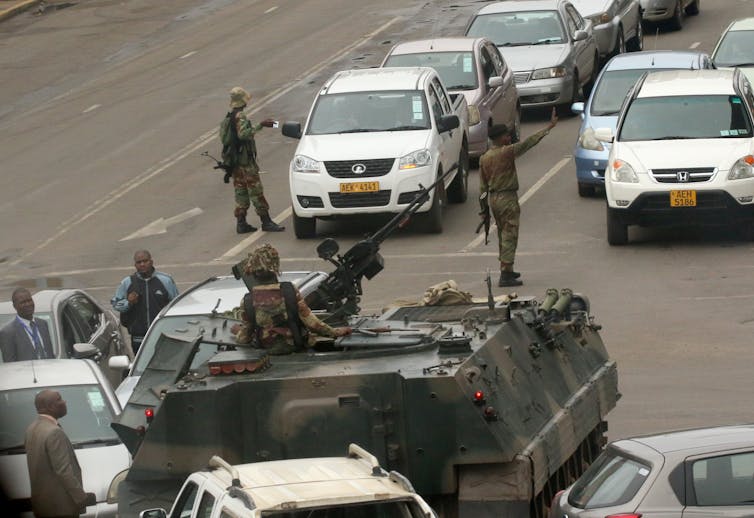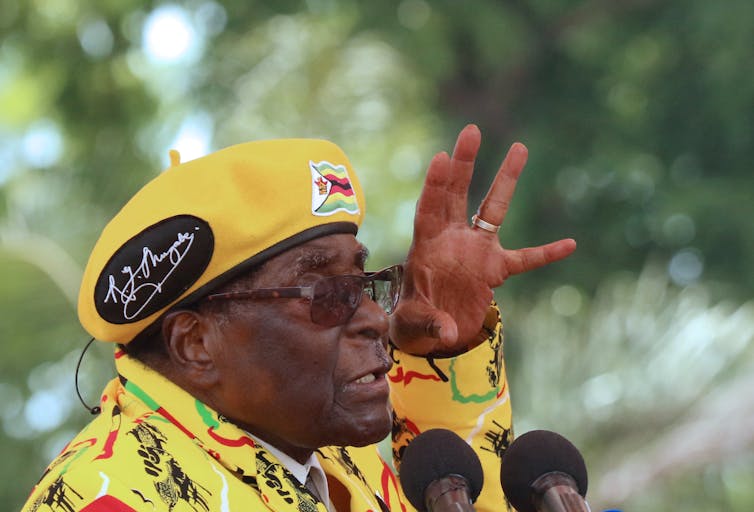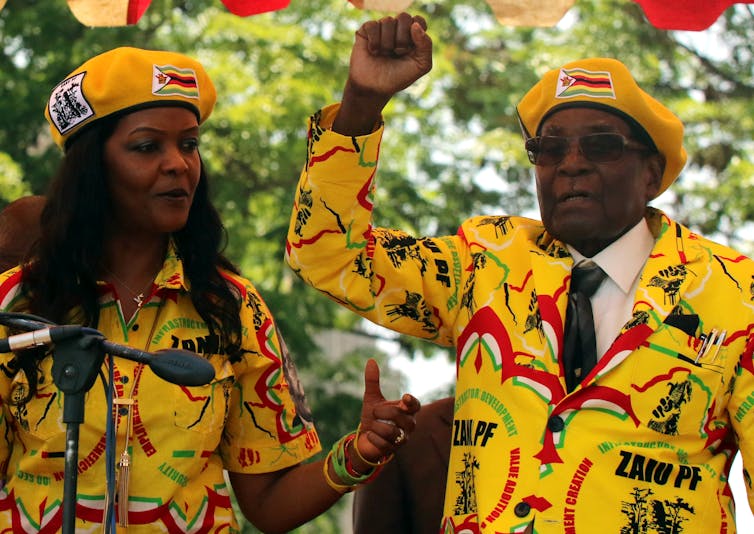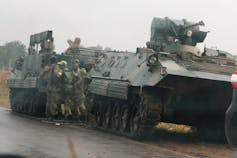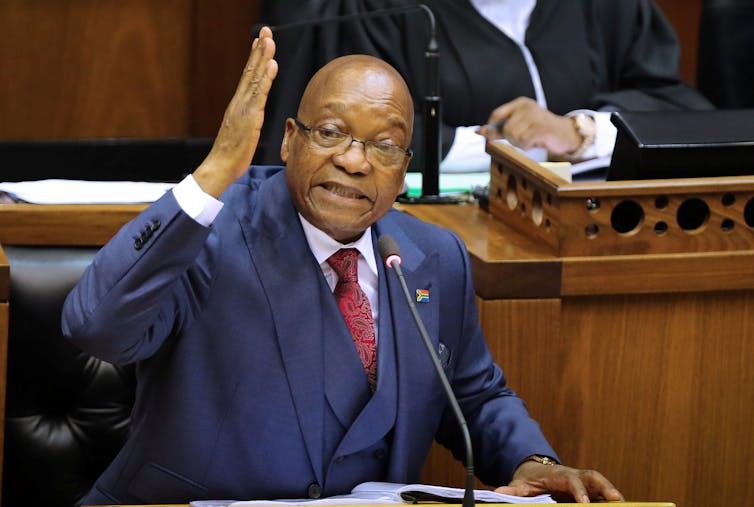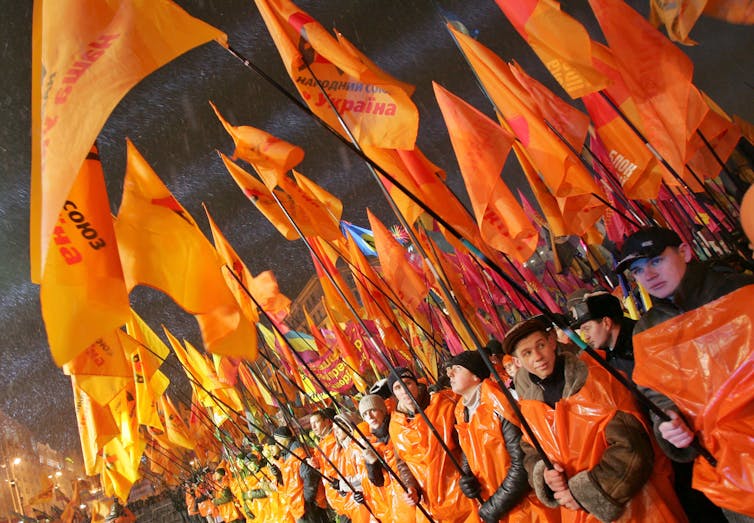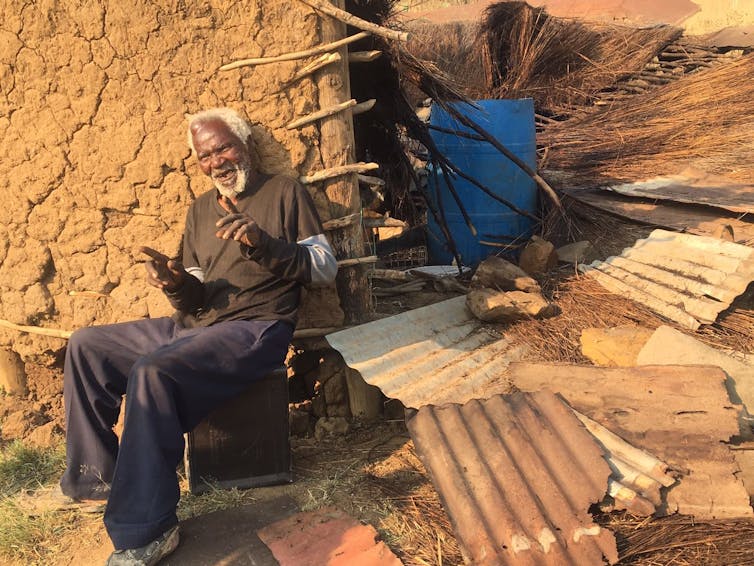
Farm dwellers like Zabalaza Mshengu live in extremely precarious conditions.
Association for Rural Advancement
South Africa’s unemployment rate puts it in the bottom ten countries in the world. Hunger levels are growing. It has what Berkeley geography professor Gillian Hart calls a “population surplus to the needs of capital” that must find ways to survive despite living a “wageless existence.”
This is happening against the backdrop of three unfolding social processes.
The first involves deteriorating conditions for survival. A new social category is emerging called the “precariat”: growing numbers of people who struggle to secure the conditions for their survival through traditional means like permanent work. Instead, more and more people survive through multiple jobs that are part-time, insecure and precarious. Guy Standing, who is a professor of economy security at Bath University and coined the term, estimates that a quarter of the world’s adult population is now in the precariat.
Secondly, land reform is now geared at servicing the economic needs of black and white rural elites. Land reform budget allocations are spent on the wealthy rather than poor South Africans who are unable to access land.
Thirdly, the structural legacy of dispossession of Africans from land hasn’t been addressed. Failing to resolve this means that a painful political question is left hanging and becomes an easy symbol to manipulate.
So how do these historical and present conditions constitute the conditions for an emancipatory politics? For instance, will rural people who need land to live on or to farm organise to assert claims for restoration?
One possible answer emerges from research undertaken by the Association for Rural Advancement (AFRA), a land rights NGO working with farm dwellers in South Africa’ Kwazulu-Natal province.
AFRA recently undertook a socio-demographic and income survey of 850 households resident on farms in the Umgungundlovu Municipal District to understand more about farm dwellers’ conditions and how these have changed over time.
AFRA’s conclusion is that the politics associated with land is not about an organised emancipatory movement. While the radical opposition party the Economic Freedom Fighters (EFF) and some factions of the governing African National Congress (ANC) are calling for the restoration of land to Africans without compensation to existing landowners, farm dwellers are mainly preoccupied with daily survival strategies.
If work opportunities arise away from farms, then many farm dwellers will choose to leave the farm. However, such opportunities are increasingly limited. Many farm dwellers are now asserting a demand to remain on land they have long ties to. These different strategies fragment farm dweller interests in the land.
But it seems that the potential exists for a social movement of people “surplus” to capital’s requirements. Whether such a movement develops depends on how effectively populist political groups can create alliances within and between the agricultural precariat, those living in city slums and those whose land access is threatened by agreements between traditional authorities and corporate interests like mining.
The International Peasant Movement, Via Campesina provides one example of a social movement involving reoccupation of unproductively used farmland. However, we argue that South Africa’s precariat is more complicated because the country is not agriculturally rich and more than half the population is now urbanised and lives in shacks on the edges of cities.
What we found
AFRA defines farm dwellers as rural people who live on large commercial farms owned by someone other than themselves.
In some respects farm dwellers are a relic of the country’s agrarian history, which involved the establishment of capitalist agriculture in the early 1900s on the back of African labour tenants’ unpaid labour. In return, tenants were granted the right to use some of the farmland for their own farming.
Our data shows that farm dwellers are not simply wage workers. They identify intimately with the land they live on. More than half of the interviewees have family graves on the farm. Their livelihoods are land-based: more than half cultivate crops, while just under half own livestock.
We identified three distinct responses of a fragmenting class of agricultural labour to the increasingly strained conditions for its social reproduction. These are: moving away from conditions on farms that make survival intolerable or impossible; seeking out better options in the cities and towns; and holding on to the roots of a familiar life and place on the farm despite deteriorating conditions.
Those who decide to move away from farms usually do so because of landowner decisions. These include explicit measures to evict some or all of the family members – this affected 7% of the total sample of over 7 000 individuals – as well as implicit or “constructive” evictions which involved the impounding of livestock, cutting off access to basic services such as water and electricity, locking gates and preventing children from attending school.
The second response – seeking better options – involves individual farm dwellers who decide to leave the farm. About a quarter of farm dwellers who have the landowner’s permission to live on the farm choose to live elsewhere. Rates of unemployment affecting households on these farms exceed 80%, so those who leave tend to have done so in search of work.
Farm dwellers must contend with difficult living and working conditions. This makes the third response – staying on the farm – perhaps the most surprising.
One factor is farm wage income which makes up 55% of household income. So when people can get work on the farms where they have dwelling rights, it makes sense for them to stay.
There are other explanations for why farm dwellers stay on farms. We call this the politics of holding on to home.
Nearly 75% of all farm dweller households we interviewed had lived on the farm in question for 23 years or longer, and had a parent, grandparent or great grandparent who was born on the farm. When asked “who is the owner of the house you live in?”, 61% said they owned the house – even though they had already stated the name of the farm’s owner.
Among the reasons given were that they had no other home and had never lived anywhere else.
When asked who would take over the home after the household head died, more than half said that someone in their family would take it over. This suggests that a different, parallel conception of ownership co-exists with legal ownership of the land. Farm dwellers know the farmer is the title holder of the farm but are also asserting that they are the owners of their homes.
Creating alliances
A political alliance among farm dwellers opting for different survival strategies doesn’t appear to exist yet although the economic conditions are present. It could possibly develop if either the EFF or a breakaway group from the ANC organise it.
Donna Hornby, Postdoctoral research fellow, University of the Western Cape
This article was originally published on The Conversation.
